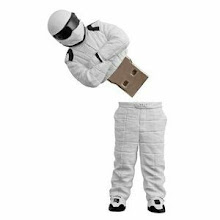here small RetrO infO of mark use in japan
Koreisha mark
In Japan, the Koreisha mark is an orange and yellow teardrop-shaped statutory sign that is set up in the Road Traffic Law of Japan to indicate "aged person at the wheel". Its official name is "aged driver sign" (高齢運転者標識, kōrei untensha hyōshiki). It is also called "momiji mark" (紅葉マーク, autumn leaf mark). Some people call it "kareha mark" (枯れ葉マーク, dried leaf mark) or "Ochiba mark" (落葉マーク, fallen leaf mark), but this is a more informal title, and considered less polite.
The law decrees that when a person who is aged 70 and over drives a car and if his/her old age could affect the driving, he/she should endeavor to display this mark on both the front and rear of the car. Drivers aged 75 and over are obliged to display the mark.
Conversely, the green and yellow shoshinsha mark or wakaba mark denotes new drivers. Both marks are designed to warn other drivers that the marked driver is not very skilled, either due to inexperience or old age.
Outside Japan, owners of Japanese classic cars have adopted this symbol, regardless of the driver's age. Japanese car enthusiasts overseas also use the Koreisha mark to indicate that they are an experienced driver as opposed to the Wakaba mark which indicates that they are new or a learner type driver
Shoshinsha / Wakaba mark
The Shoshinsha mark or Wakaba mark, introduced in 1972, is a green and yellow V-shaped symbol that new Japanese drivers must display on their cars for one year. A driver must display this mark on the front and back of the car for one year after they obtain a standard driver's licence. This obligation is only for a standard license, not for motorcycles, large vehicles, special cars and so on. Drivers who consider themselves beginners may continue to display the sign, even after the period of a year.
Its official name is The Beginner Drivers' Sign (初心運転者標識 shoshin untensha hyōshiki). Conversely, the orange and yellow "Fukushi mark" or "Koreisha mark" denotes elderly drivers. Both marks are designed to warn other drivers that the marked driver is not very skilled, either due to inexperience or old age.
Other Use of the Shoshinsha mark is commonly seen on topics/tutorials targeted at beginners (whether it involves driving or not), having the meaning "For beginners" or "Beginners are welcomed" .
The mark is also used as the logo for the imageboard software Wakaba written in Perl by Turku, Finland-based programmer Dag Ågren and by the imageboard index iichan whose indexed imageboards use Wakaba as their software package. The software also features a markup language called Wakaba mark.
The mark is also increasingly being used by JDM enthusiasts in other countries, such as Australia, Malta, the U.K and U.S.A. to show their passion and interest in JDM culture. Source From Wikipedia, the free encyclopedia
T
he Japanese government is changing the time-honored Koreisha Mark. Problem was, senior citizens deemed the current design — a teardrop shaped leaf in fall colors (center) — rather insulting and complained to the National Police Agency, who oversees driving symbols.
Apparently, the elderly did not like to be reminded of their impending mortality. However, even when the autumn leaf is replaced, the Wakaba Mark for beginning drivers will still remain a green and yellow spring leaf.
The four Koreisha Mark finalists are, starting from the top left:
1. A four-leaf clover with a stylized “S” for senior
2. Circles of various colors, symbolizing the many years lived by our elders
3. A bird, heart, and hand combined into one symbol
4. Palms symbolizing a harvest of rice





No comments:
Post a Comment